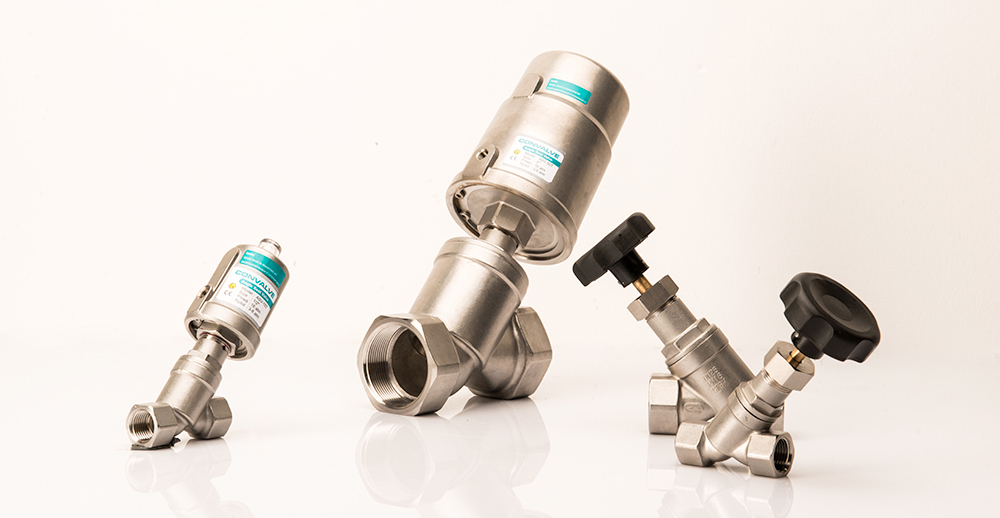In industrial processes, choosing the right valve is not just about cost—it is about safety, reliability, energy efficiency, and long-term performance. In many applications, multiple valve types may work, but the best choice depends on technical priorities such as line size, pressure and temperature ratings, cycle life, footprint, and operating speed.
This article expands on these five factors and provides a practical, engineering-based framework to guide valve selection.

LINE SIZE: WHEN DIAMETER ≥ 2”
For line sizes of 2 inches (DN 50) and larger, butterfly and gate valves often become the most economical solutions.
- Butterfly valves are lightweight, cost-effective, and easy to automate with actuators.
- Gate valves are preferred for slurry or particulate media and where linear throttling is needed.
Engineering Note – Pressure Drop:
The Darcy–Weisbach equation highlights the impact of diameter on frictional losses:
ΔP = f · (L/D) · (ρv²/2)
PRESSURE–TEMPERATURE RATINGS
For high-pressure and high-temperature service, ball valves and angle seat valves provide the most reliable shutoff and sealing characteristics.
- Ball valves: robust body, metal seats, suitable for hydrocarbon and chemical service.
- Angle seat valves: excellent thermal and pressure tolerance, but limitations at very large sizes.
Stress Consideration (Thin-Walled Cylinder):
σθ ≈ (P · D) / (2t)
CYCLE LIFE: HIGH-SPEED, HIGH-FREQUENCY APPLICATIONS
Applications such as filling, dosing, or bottling lines may require thousands of valve cycles per day.
- Angle seat valves (pneumatic actuation) and solenoid valves (electric actuation) deliver long cycle lives and very fast response times.
- Ball and butterfly valves are sufficient for low-cycle applications such as process isolation.
Engineering Note – Water Hammer:
Fast-closing valves increase water hammer risks. Actuator ramp times should be tuned, or non-slam designs selected, to reduce surge pressures.
FOOTPRINT AND SPACE CONSTRAINTS
In compact skid-mounted systems, modular units, or OEM equipment, angle seat and solenoid valves are preferred due to their small footprint and integrated actuation.
- Reduced weight lowers structural stress.
- Smaller size simplifies maintenance and installation.
OPERATING SPEED
- Angle seat valves provide the fastest open/close times, improving precision in dosing applications.
- Solenoid valves also offer high switching speed but are limited by Cv (flow coefficient).
- Larger valves (butterfly, gate) have slower actuation speeds but are acceptable in isolation duties.
HYDRAULIC SIZING: CV, VALVE AUTHORITY, AND CONTROL STABILITY
Flow Coefficient Equation (US units):
Q = Cv · √(ΔP / Gf)
Where:
Q: flow rate
Cv: valve flow coefficient
ΔP: pressure drop
Gf: specific gravity
Valve Authority:
N = ΔPvalve / ΔPtotal
For control valves, an authority between 0.3 and 0.7 is usually recommended for stability.
MATERIAL AND MEDIA COMPATIBILITY
- Stainless steel, bronze, and high-performance polymers should be matched to the fluid’s chemical and temperature properties.
- For abrasive or slurry service, gate valves and hardened seat designs are preferred.
- For clean steam or hygienic service, angle seat or sanitary ball valves are most suitable.
AUTOMATION AND ACTUATION
- Pneumatic actuators: fast, safe, explosion-proof.
- Electric actuators: easy integration, low maintenance.
- Hydraulic actuators: high torque, suitable for large valves.
Butterfly and gate valves in large diameters are usually the most economical to automate.
QUICK COMPARISON MATRIX
| Factor / Valve Type | Ball | Butterfly | Gate | Angle Seat | Solenoid |
|---|---|---|---|---|---|
| ≥ 2” line size | Moderate | High | High | Low | Low |
| High P/T rating | High | Medium | Medium | High | Low |
| Cycle life | Medium | Medium | Low | Very High | High |
| Compact footprint | Medium | Medium | Low | High | High |
| Operating speed | Medium | Medium–High | Low | Very High | High |
| Slurry media | Low–Medium | Medium | High | Medium | Low |
| Automation cost | Medium | High | Medium | High | High |
STEP-BY-STEP VALVE SELECTION GUIDE
- Define line size, pressure, temperature, and flow range.
- Assess media characteristics: clean, corrosive, or particulate.
- Define function: on/off, throttling, or directional control.
- Determine cycle frequency and response time requirements.
- Check space limitations and installation constraints.
- Select actuation method (manual, pneumatic, electric, hydraulic).
- Compare total cost of ownership (TCO), not just purchase price.
CONCLUSION
There is rarely a single “correct” valve for every case. Instead, multiple valve types may be suitable, and the best choice comes down to balancing line size, pressure-temperature requirements, cycle life, footprint, and actuation speed.
- Butterfly/Gate → cost-effective for ≥ 2” pipelines
- Ball/Angle Seat → reliable under high P/T
- Angle Seat/Solenoid → best for fast, high-cycle operations
- Compact valves → ideal for skid-mounted systems
By combining hydraulic calculations, material compatibility, automation needs, and lifecycle cost, engineers can make data-driven decisions that ensure safe, reliable, and efficient valve operation.
